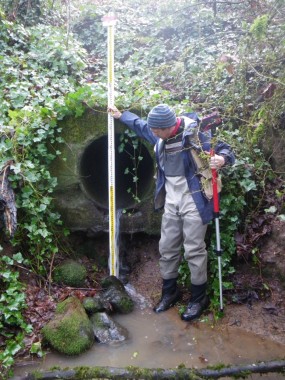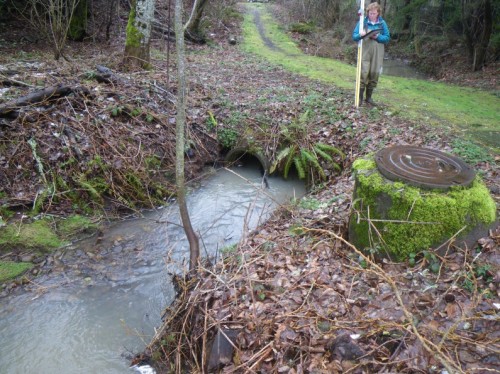By Jan Mehaffy – JCWC’s Fish Passage Technician
 Despite snow, rain, and wind, our watershed-wide assessment of potential fish passage barriers continues! Last year, our volunteers and interns collected baseline information on more than 180 culverts and stream crossings—this was a huge help in reducing the number of culverts we needed to visit with our professional fish biologist, Ted Labbe of Kingfisher Ecological Services (KES).
Despite snow, rain, and wind, our watershed-wide assessment of potential fish passage barriers continues! Last year, our volunteers and interns collected baseline information on more than 180 culverts and stream crossings—this was a huge help in reducing the number of culverts we needed to visit with our professional fish biologist, Ted Labbe of Kingfisher Ecological Services (KES).
This month, JCWC and KES are out and about conducting professional surveys of the stream crossings flagged for further assessment by our volunteers last spring and summer. With vegetation died back and higher flow in the tributaries, this is a good time to gather data on these culverts.
We will survey approximately 100 publicly and privately owned culverts (where we have permission) on tributaries throughout the watershed, gathering data on slope, flow, and water velocity to determine if the crossings are barriers to juvenile and adult salmonids. After our professional assessments are complete, we will begin to prioritize the barriers for removal using an innovative new model called APASS (Anadromous Fish Passage Optimization Tool). This budget-constrained model will help us direct our limited restoration dollars to those barriers that are blocking the best or largest stretches of habitat. If you have any questions on our assessment, or have a stream crossing you would like evaluated, please let us know! Call or email Jan at 503-652-7477 or jan@jcwc.org.

